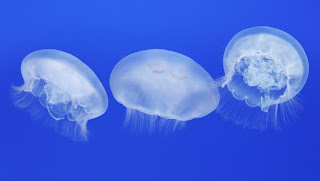According to a US and Australian report in today's Proceedings of the National Academy of Sciences, moon jellyfish are hitchhiking around the globe in ships' ballast waters and hulls.
And they may have been doing so for more than 500 years when international shipping and trade began in earnest.
While moon jellyfish are found in many parts of the world, including Australia, researchers from the University of California, Davis and the University of New South Wales have found strong evidence that most are not indigenous to the area they live in.
The finding adds to data from recent surveys suggesting that around 23% of all marine species in international harbours are not indigenous, a situation scientists fear could displace local marine species, threaten ecosystems and cause billions of dollars in damage and preventive control.
Around 3000 species of marine organisms travel the world in ships' ballast water each day.
Researchers used computer simulations of ocean currents and water temperatures and examined the DNA of moon jellyfish found in Japan, California, western Europe and the east and west coastlines of Australia to determine their origin.
"We simulated natural dispersion including all sorts of effects such as tidal currents and eddies in the ocean," says Associate Professor Matthew England, an Australian oceanographer who worked on the study.
"And we demonstrated that you could never get a jellyfish, say, from Japan right down to Australia in this way. It had to be the ships facilitating their dispersion."
He says while moon jellyfish are benign, and don't sting people, their migratory behaviour is still a concern.
"We're increasingly finding introduced species in new waters," England says.
"While we don't think this particular jellyfish will change the ecosystem or alter the food chain too dramatically, it's alarming if you think about a toxic species [of marine life] being introduced in this way. That could have significant consequences." Source


No comments:
Post a Comment